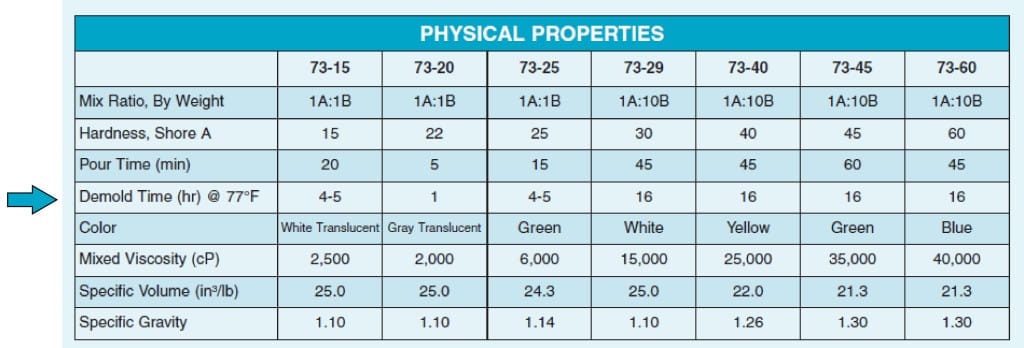Tek-Tip: Top 10 Most Common Rubber Mold Making Fails
We’ve compiled a list detailing the most common reasons that rubber mold making projects go wrong (e.g, uncured materials, incomplete molds, accidentally bonding materials together, breaking models, etc.). Numbers 1-5 are the most typical issues, while 6-10 do not happen quite as often:
1. Unmixed Material
Unmixed material is one of the more common issues that can occur during the mold making process. When these two-part systems are not mixed properly, it can result in streaks of uncured rubber, soft rubber, or air bubbles.
It is important to scrape the sides and bottom of the mixing container several times during the mixing process (unmixed material tends to cling to the sides of the container). For added security, some choose to initially mix in one mixing container and then transfer the rubber to a new mixing container for a second round of mixing.
For larger batches of rubber (e.g. >30 lb), consider using a Jiffy or Turbo Mixer on a variable speed drill. In this case, avoid hitting the blades against the bottom and sides of the mixing container as it can create air bubbles. You should still use a hand-held paddle (e.g., Poly Paddle), or similar mixing tool, to scrape the sides and bottom of the mixing container several times during the mixing process.
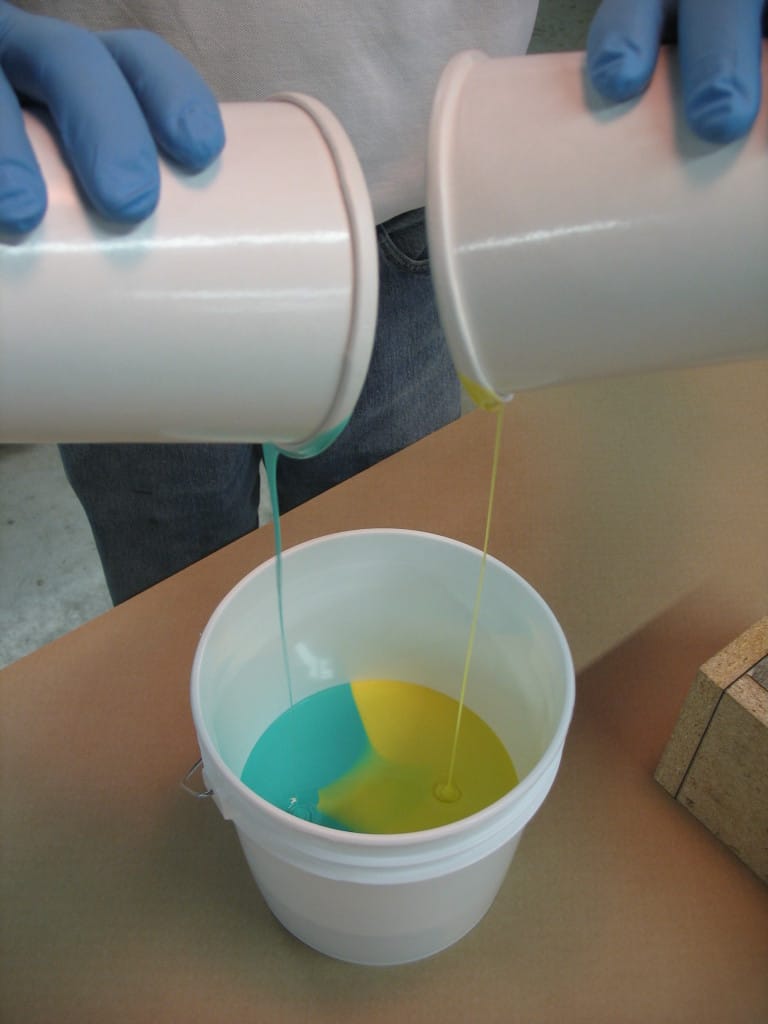
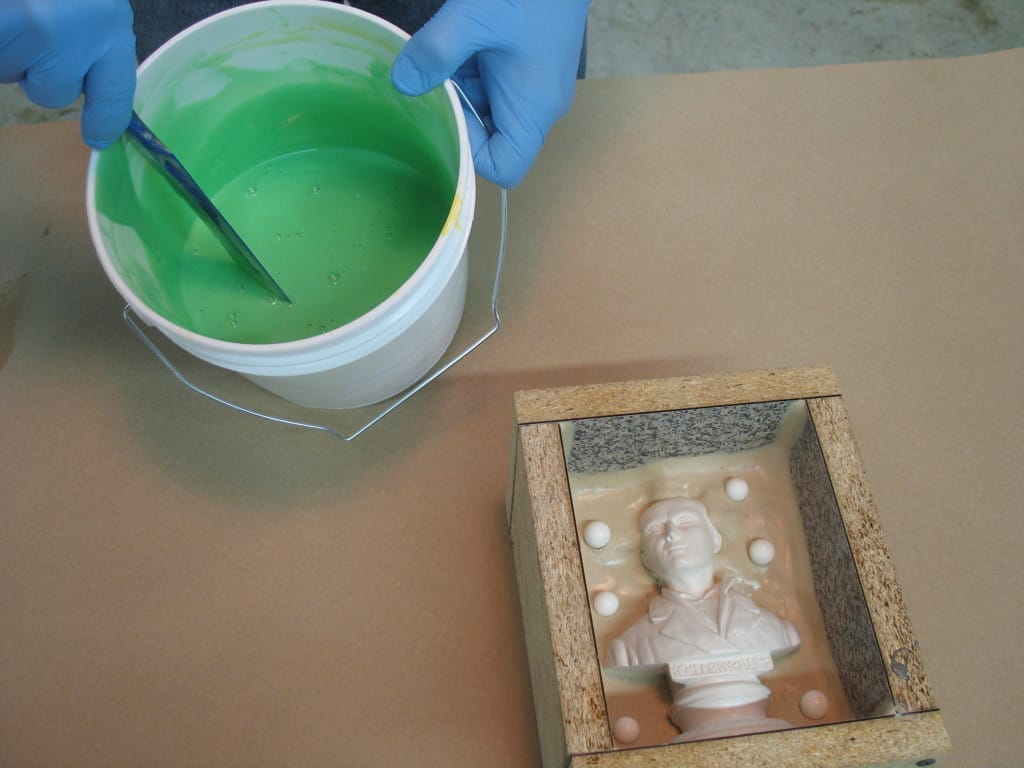
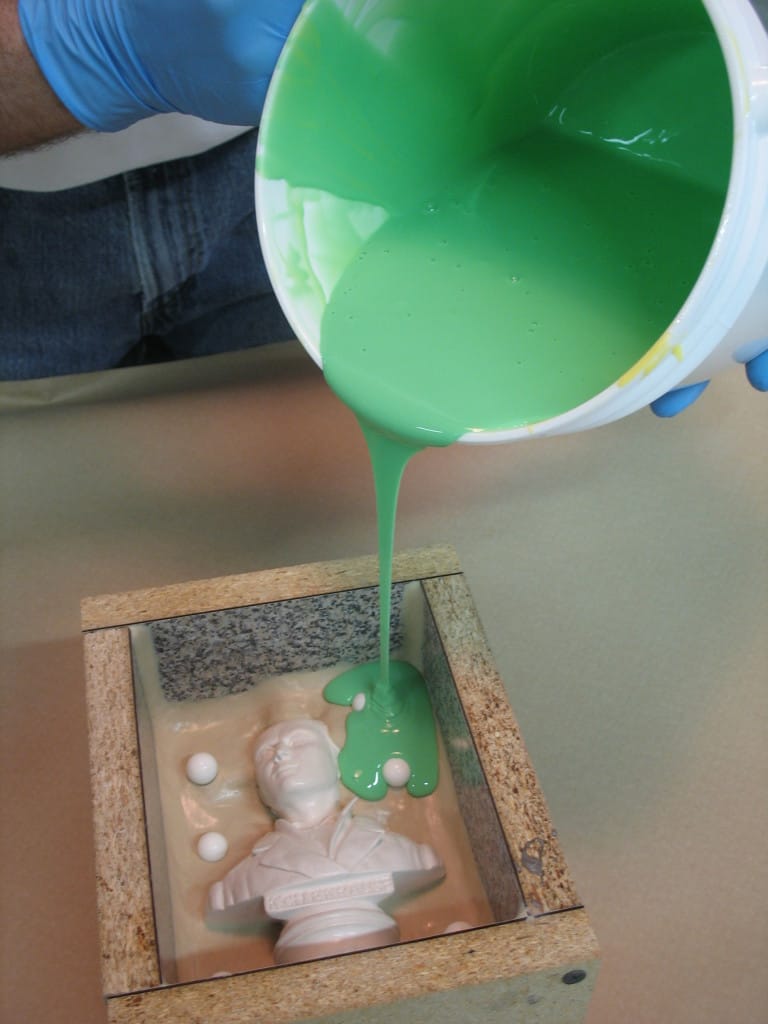
2. Mixing Off Ratio
All Polytek® polyurethane and silicone liquid mold rubbers are two-part systems; these two parts (Part A & Part B) must be properly measured and mixed on-ratio to ensure that the product reaches the final physical cure properties that Polytek chemists have formulated.
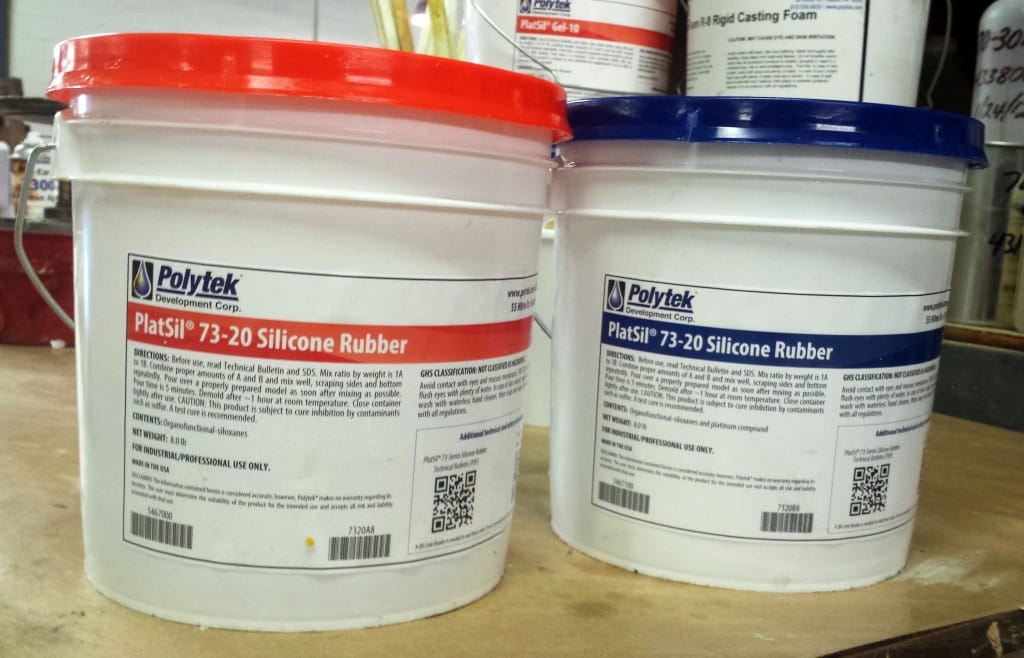
[Two-Part Platinum Silicone Rubber [PlatSil® 73-20]. Part A is on the left and Part B is on the right.]
In order to cure 100 reactive groups of Part A, 100 reactive groups of Part B are necessary. If 100 reactive groups of Part A weigh two pounds and 100 of Part B weigh one pound, then the mix ratio must be two Parts A to one Part B (2A:1B), by weight.
Examples of common mix ratios include:
1A:1B | 1A:10B | 1A:2B | 2A:1B | 4A:1B
If these products are not mixed on-ratio, they can cure slowly, cure partially, cure softer than they’re supposed to, or not cure at all.
Many Polytek products can be measured by volume; however, measuring by weight is typically more accurate. For mix ratios other than 1A:1B, we highly recommend using a scale.
Before beginning a project, always double check product mix ratios. This information can be found in the Polytek Catalog, on product Technical Bulletins, and on product labels. If you’re unsure of the mix ratio of a product, please call us.
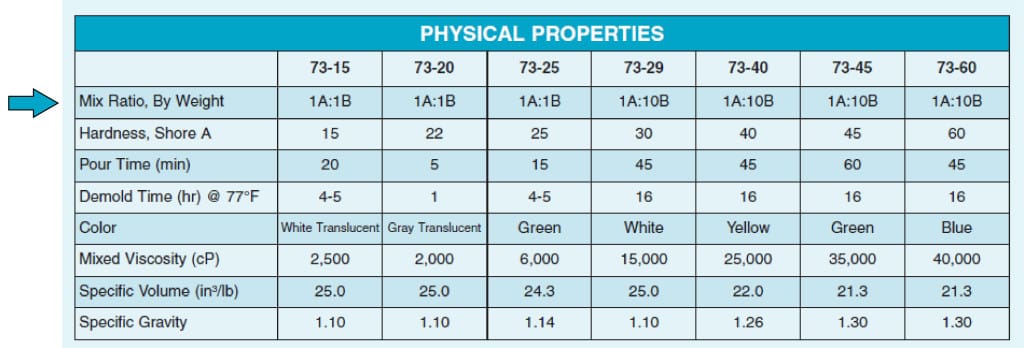
3. Material Not Stirred Before Use
Some components require individual stirring or shaking before being mixed with other components. In some cases, only Part A needs to be stirred, while other products may require only Part B or both Part A and Part B to be stirred. This will be indicated by a sticker on the lid of the product. Failure to stir the necessary components may result in soft cures or bubbles in the finished mold.
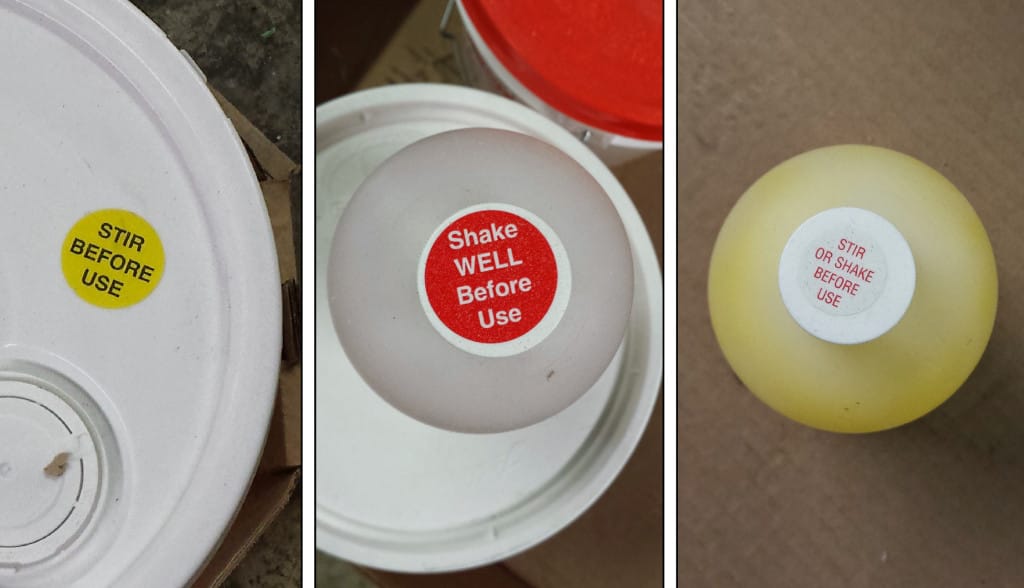
4. Low Temperatures
All materials should be at room temperature when mixing and pouring. Temperatures below 65°F will result in longer cure times, or some materials may not cure at all. Use heat lamps to help the cure at these lower temperatures.
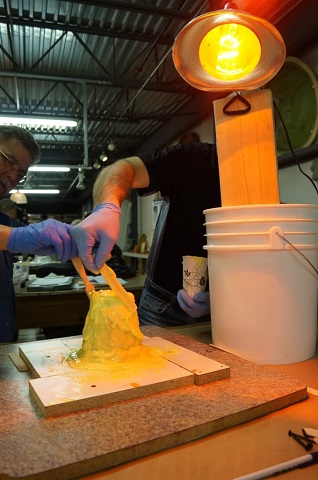
5. Release Agent or Sealer Issues
There are a few different issues that can arise with the misuse of release agents and sealing agents:
Missing Sealer or Release Agent
Sealing agents are designed to seal small pores/holes in the model before pouring liquid rubber. If a porous model is not properly sealed, rubber may lock onto these pores and there’s a good chance that you won’t be able to recover the model. Release agents are applied to models to help prevent rubber from sticking or bonding to certain surfaces; neglecting to apply release agent when necessary can result in mold rubbers permanently bonding to models.
The Wrong Sealer or Release Agent
We recommend specific sealers and release agents depending on the model material and mold rubber material. PolyCoat Sealer & Release Agent, for instance, works well when creating polyurethane rubber and platinum-cured silicone rubber molds, but we would not recommend it when working with tin-cured liquid silicone rubber. For detailed information, please refer to our “Sealers & Release Agents: A Selection Guide”.
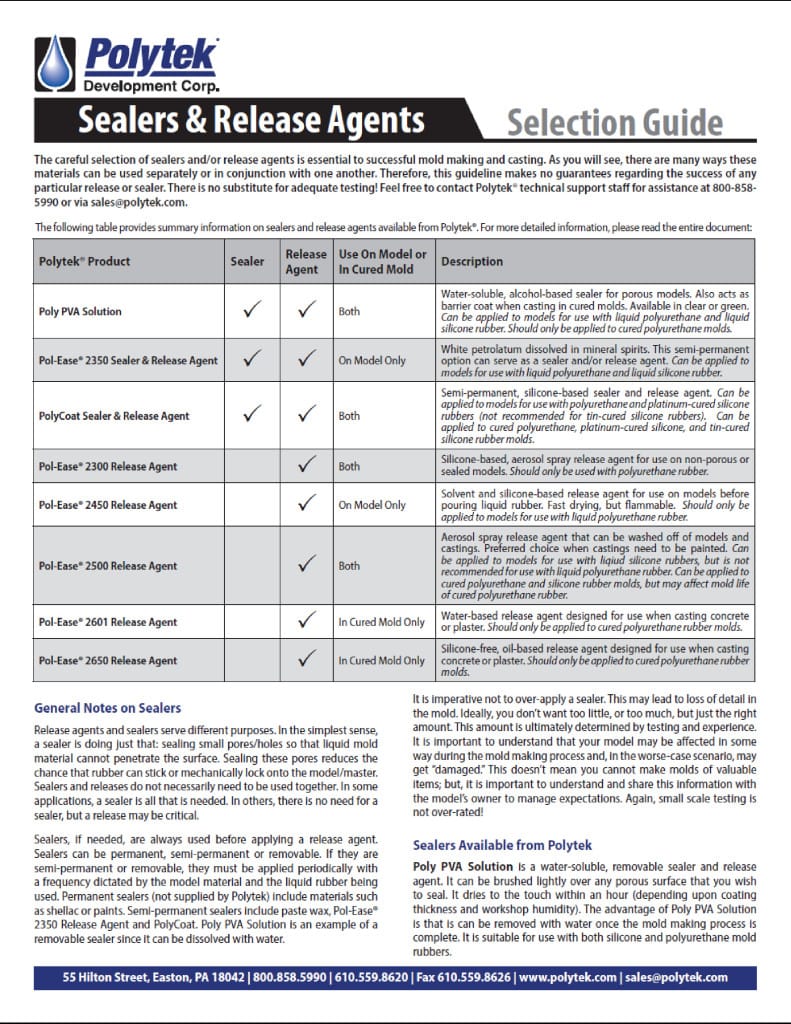
Incorrectly Applied Sealer or Release Agent
Improper application of sealers and release agents can result in rubber sticking to the model. Generally, Polytek sealer and release agents are packaged as a pourable or sprayable liquid. For pourable agents, such as Pol-Ease® 2350 Sealer & Release Agent, we recommend pouring the material into a cup and then carefully applying it to the model with a dry brush, encouraging thorough coverage. With sprayable options, we recommend spraying the model and then brushing the agent out with a dry brush.
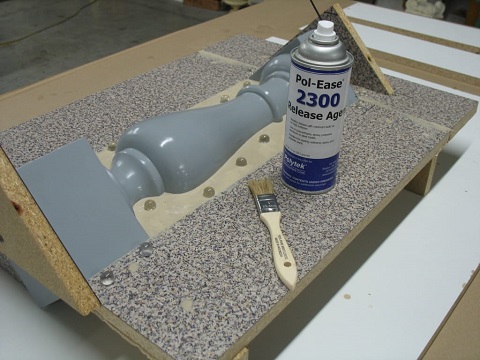
Some sealers and release agents contain solvents (e.g., Pol-Ease 2350 Sealer & Release Agent contains mineral spirits). After application, it is important to wait long enough to allow sufficient evaporation of the solvent before applying liquid rubber.
Too Much Release Agent
Applying too much release agent promotes puddling and can result in pinhole surface defects in the cured mold. It is important to thoroughly brush out release agents to encourage an even coat.
6. Rubber Hardens Before it’s in Place
Pour time, listed in minutes, is the amount of time you have, after adding Part A and Part B together, before the mixture cures to a point where it is no longer able to flow.
Some liquid mold rubbers have short pour times; PlatSil® 73-20, for instance, has a working time of 5 minutes. It is important to have Part A & Part B properly mixed and applied (i.e., poured, brushed, sprayed) on to the model within the pour time.
If you are vacuum degassing your mold material, opt for a product with a longer pour time.
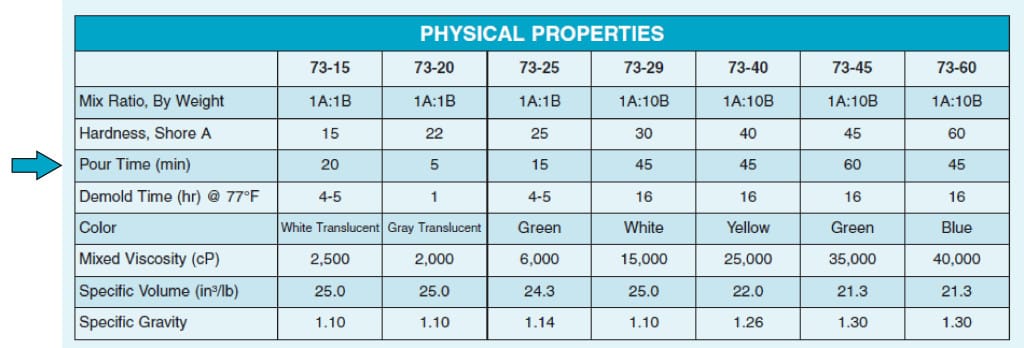
7. Contaminated Material
Polyurethane liquid rubber is especially sensitive to moisture; Part A will harden over time when exposed to moisture (e.g., improperly sealed containers). Spraying Poly Purge Aerosol Dry Gas into opened containers before resealing can help to extend the life of the product.
As mentioned earlier, liquid platinum silicone rubbers can suffer from cure inhibition when in contact with certain materials. Let’s say, for instance, that you use clay to seal the edges of your models before pouring liquid rubber over them and that you often re-use this clay for various projects (we routinely re-use clay in our own shop). If that clay was at some point in contact with an inhibiting material (e.g., tin-cured silicone rubber), it may transfer those contaminants, at a later date, to the liquid platinum silicone rubber you’re using for the project at-hand.
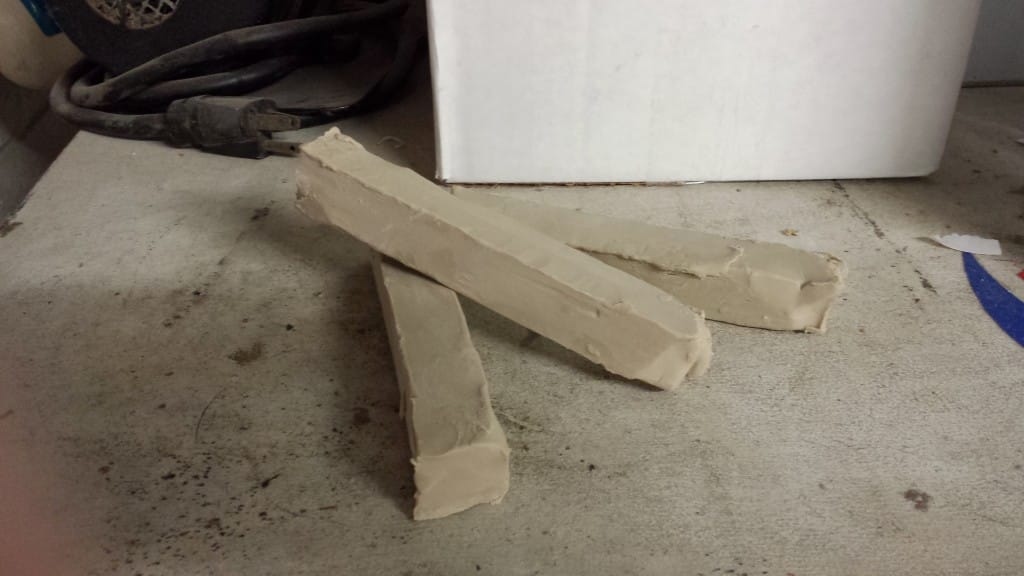
When possible, use product from newly opened containers and always use clean mixing containers and tools.
8. Incorrect Mold Material Selection
Selecting the wrong mold material can result in damage to the model or mold (e.g., softening, staining, sticking).
Cure Inhibition
Liquid platinum silicone rubbers, for instance, can suffer from cure inhibition (i.e., failure of a compound to cure against a surface within the recommended cure time) when poured over the certain materials (e.g., sulfur-based clay, tin-cured silicone rubber, latex rubber, some paint products, some 3D-printed plastic materials, Bondo). Uncured rubber can be difficult to remove from models and may stain them. We always recommend performing a small test cure on the model material before making an entire mold. Click here to see how we perform test cures.
Size of the Model
When working with a model that is large in size, using a poured block mold method, as opposed to a blanket mold method, may leave you with large, cumbersome sections of rubber. Blanket molds create a more manageable, thin mold (~3/8″ to ~1/4″), but do require a mold shell. Certain mold rubbers, including self-thickening and sprayable rubbers, are more often used to create thin blanket molds for larger models.
Shape of the Model
Models with deep undercuts/protrusions typically require a softer rubber. Demolding a harder rubber may damage the model.
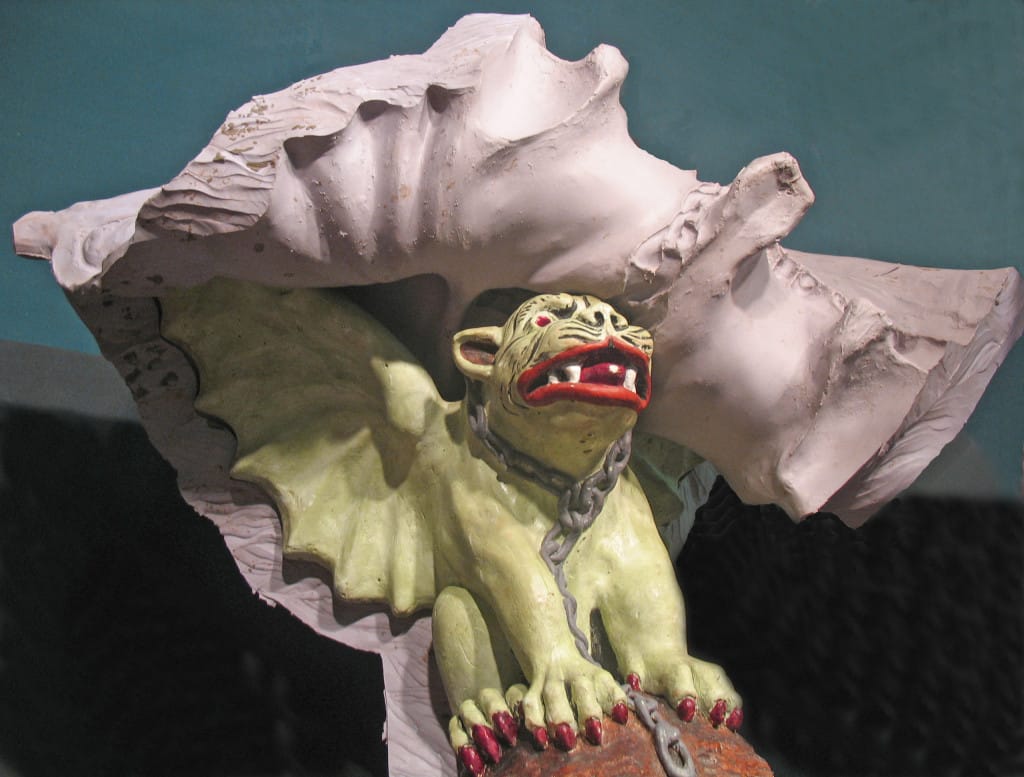
[PlatSil® 71-20, which has a Shore Hardness of A20, is used as the mold material for this model. For more information on Shore Hardness, visit this article.]
Harder rubbers are more appropriate for models with a simple shape.
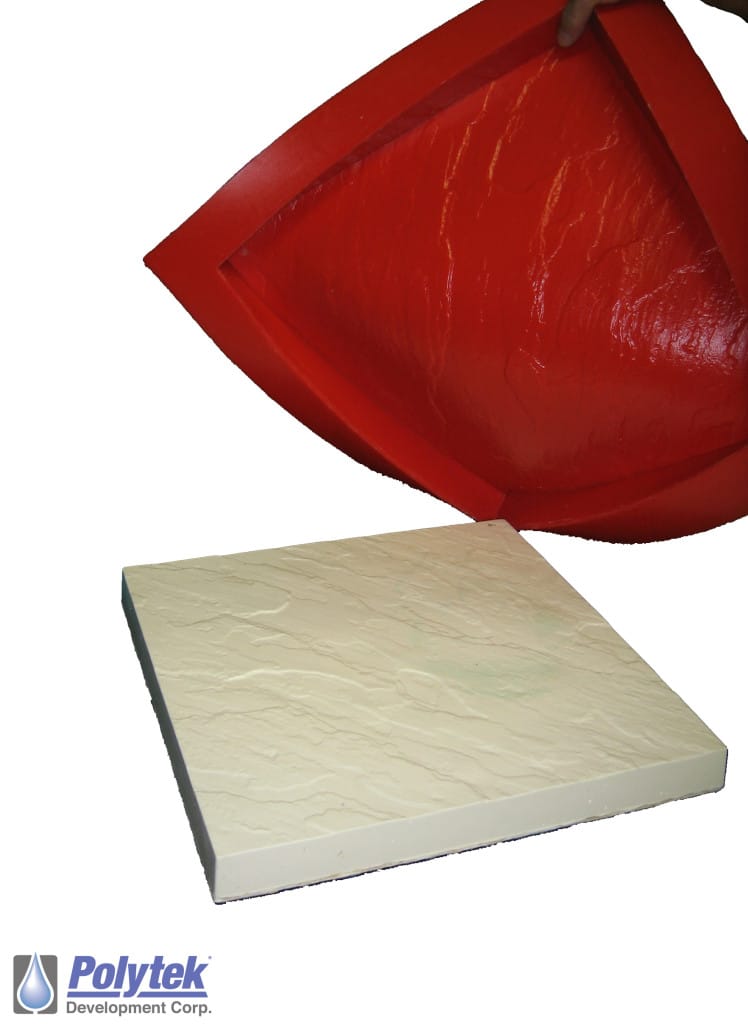
[Poly 75-70, a hard (Shore A70) polyurethane rubber, was used as the mold material for this flat-sided paver stone.]
Location of the Model
If the model is, for instance, located on the side of a tall building (e.g., a gargoyle) and/or permanently vertical (e.g., the column pictured below), a low-viscosity “pourable” liquid mold rubber will run off the model and result in wasted materials. A self-thickening rubber (e.g., Polygel® 35 Brush-On Rubber), a pourable rubber thickened with a thickening agent (e.g., Poly Fiber II for polyurethane rubbers), or a sprayable rubber should be utilized.
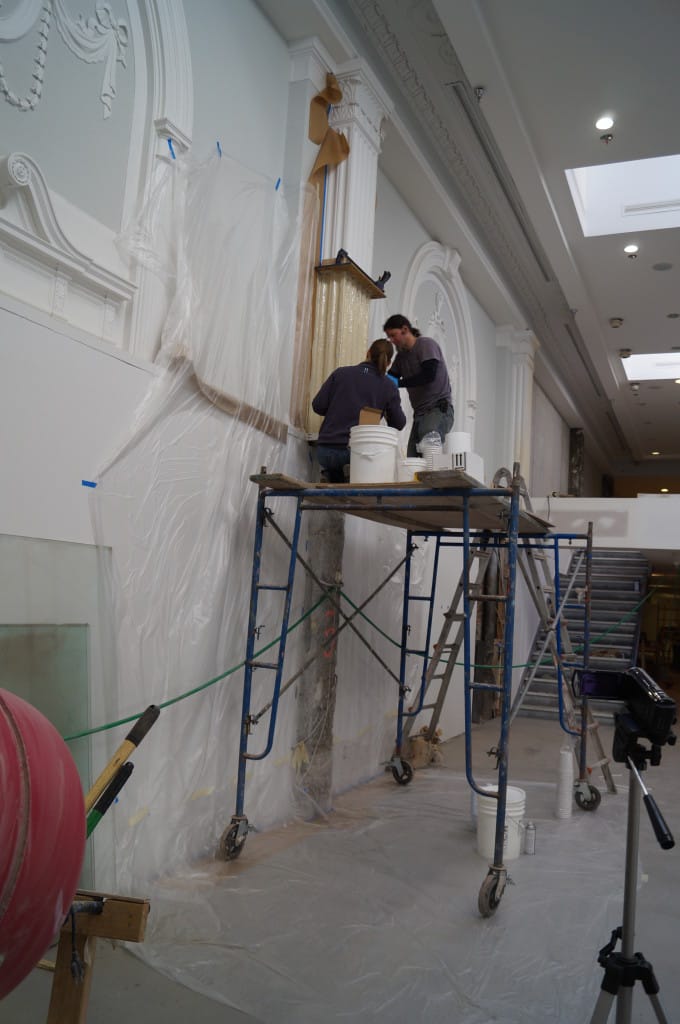
9. Leaking Mold Boxes or Mold Shells
Leaking mold boxes and shells do not cause cure issues; however, leaving a mold box with a leak unattended overnight can leave you with a half-complete mold in the morning.
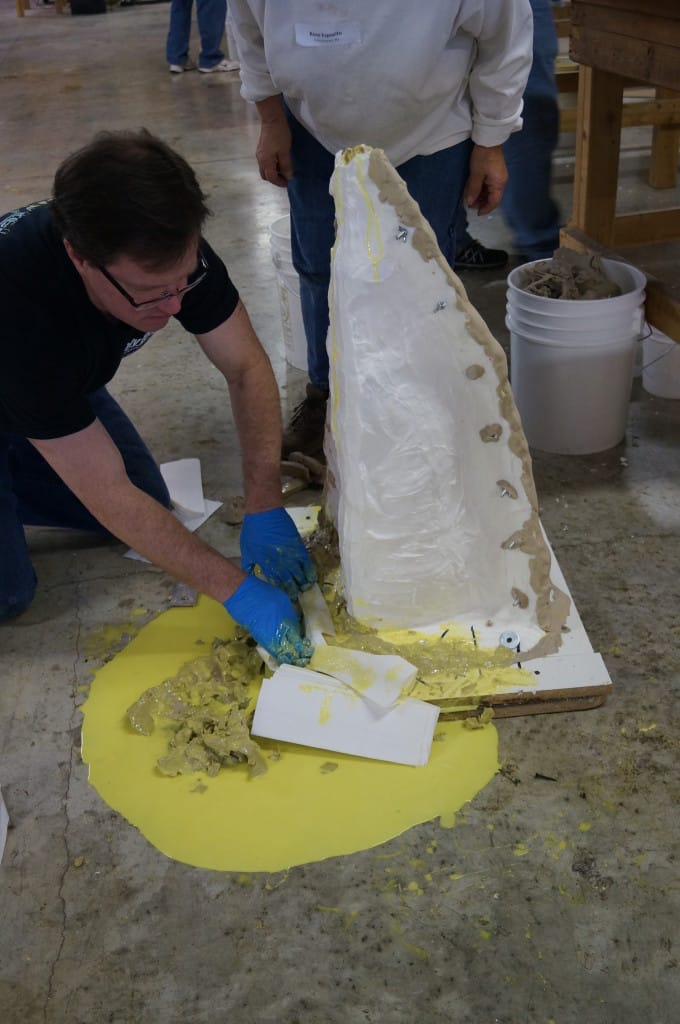
Mold shells and mold boxes usually require hardware and sealing to avoid leaks. The mold box below is secured with wood screws and sealed with plasticine clay (warmed up for easier application).
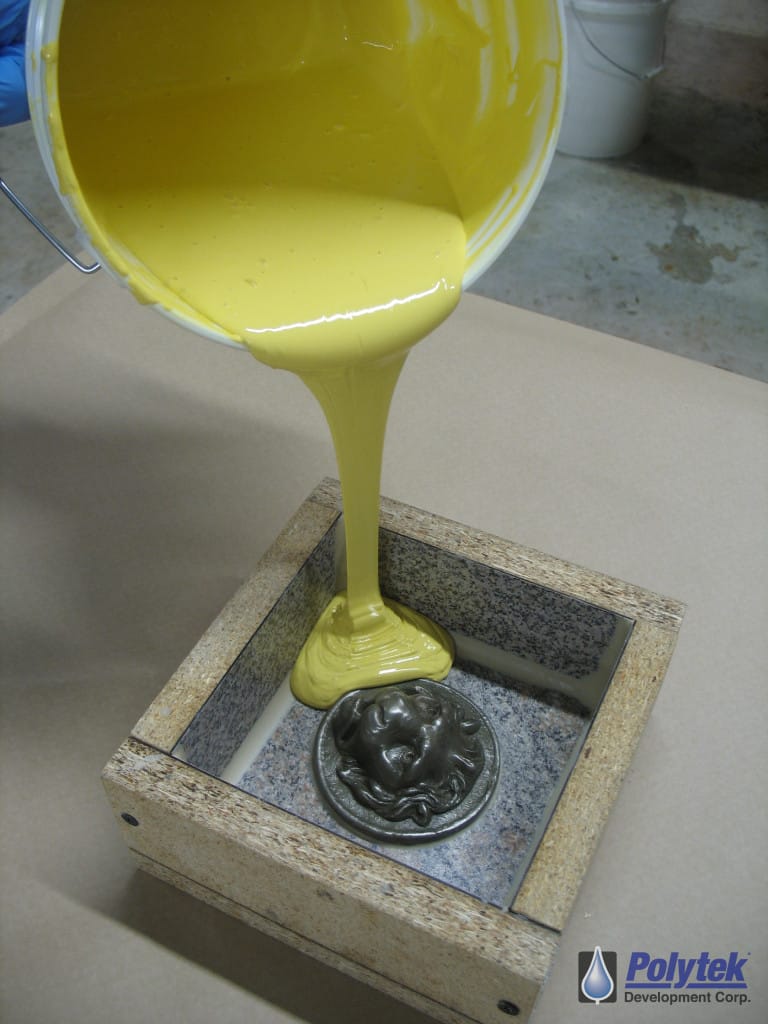
This Poly 1512X polyurethane plastic mold shell is secured with nuts, washers, and bolts and sealed with plasticine clay around the hardware and at the base of mold shell.
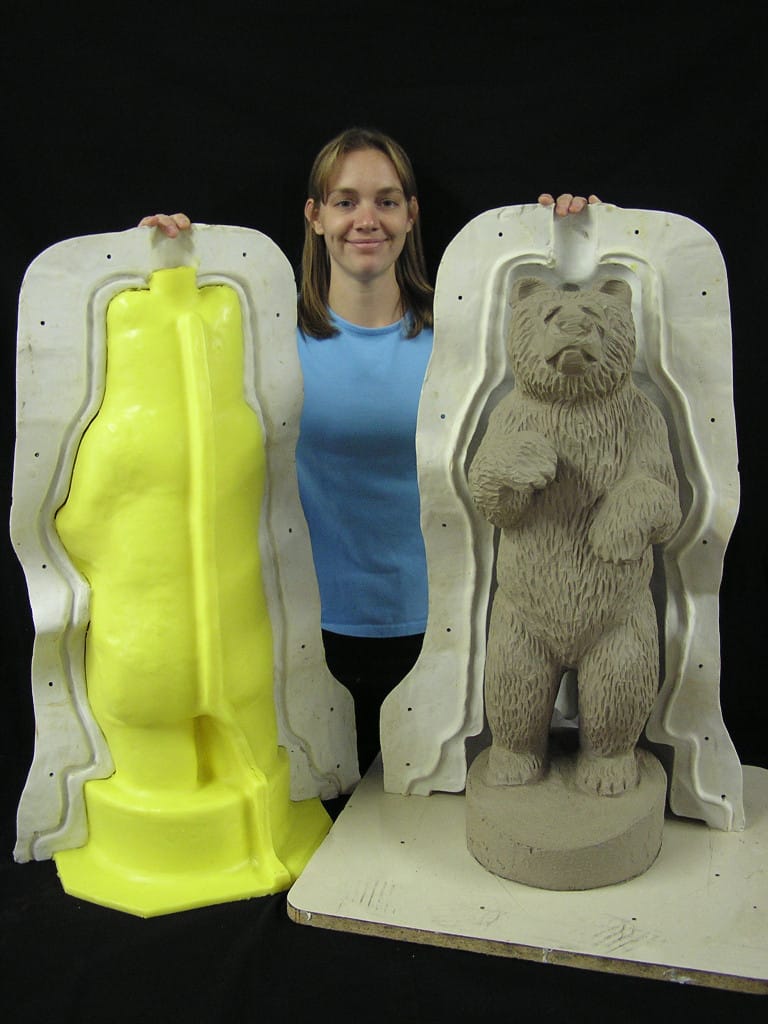
10. Demolding Too Soon
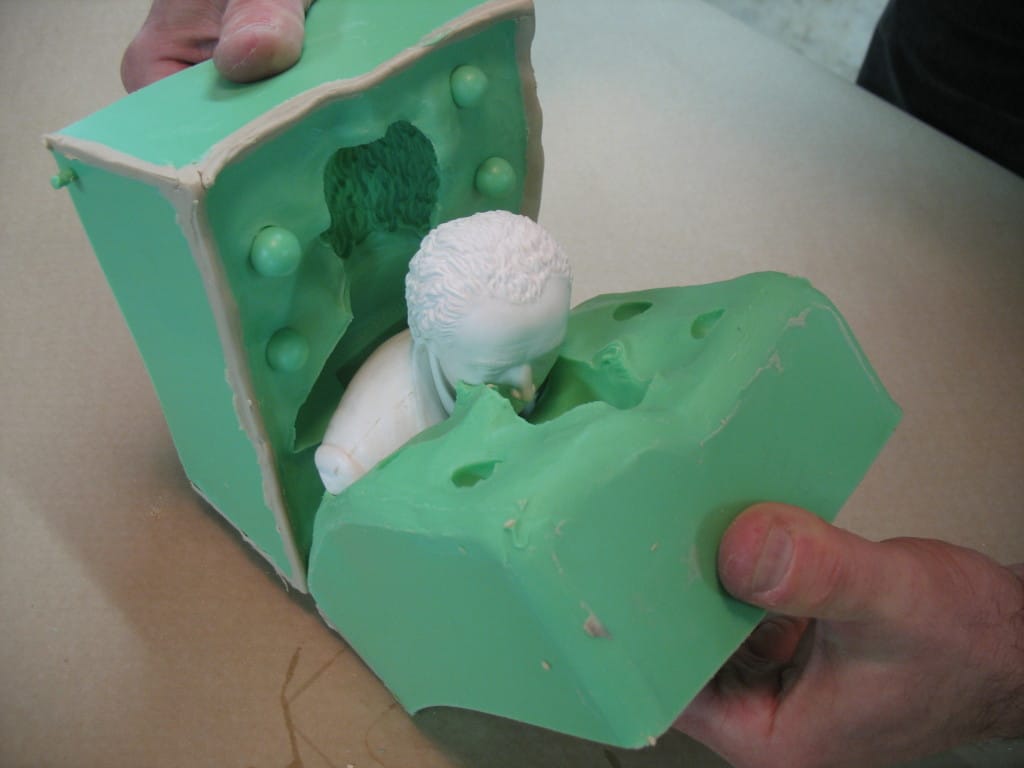
“Demold Time” (listed in either minutes or hours) is the amount of time you should wait (starting at the end of the pour time) before removing a mold from a model. Demolding too soon can cause permanent distortion in the material. The final cure properties of many of our rubbers are not reached for 7 days, so molds should be stored on a flat surface or in their mold shells to avoid distortion after demolding.
